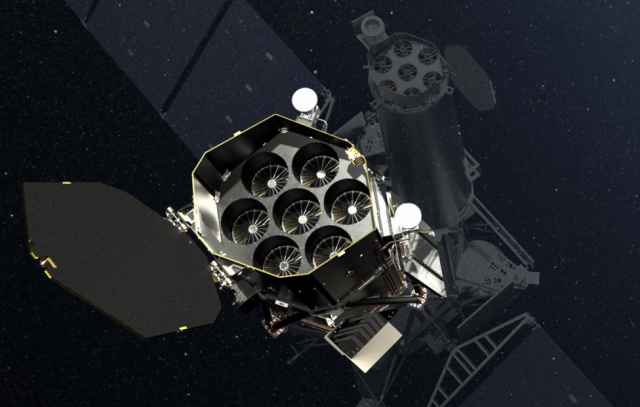This map indicated the existence of an "interstellar tunnel" linking this structure with other plasma bubbles, the MPE press service reported.
MOSCOW, October 29th. /tass/. The German eROSITA telescope, installed at the Russian Spektr-RG observatory, has compiled the first detailed three-dimensional map of the "local bubble" - a hot cloud of plasma that surrounds the Solar System and neighboring stars. This map indicated the existence of an "interstellar tunnel" connecting this structure with other plasma bubbles, the press service of the German Institute of Extraterrestrial Physics (MPE) reported.
"This map helped us to clarify the temperature variation in different regions of the "local bubble", which were previously revealed by the ROSAT probe, as well as to discover traces of the existence of an "interstellar tunnel" directed towards the constellation Centauri. Its discovery was made possible due to the high sensitivity of eROSITA and a fundamentally new observation strategy compared to ROSAT," said MPE researcher Michael Freiberg, quoted by the institute's press service.
The so-called "local bubble" is a giant cloud of plasma heated to a temperature of several million degrees Kelvin. It presumably arose about 10-20 million years ago as a result of the explosion of one or more supernovae, whose emissions cleared this region of interstellar space of neutral gas and saturated it with hot plasma, which produces a barely noticeable X-ray glow.
Fryberg and his colleagues have compiled the first accurate map of this region of space using data collected by the eROSITA telescope while compiling the most extensive catalog of X-ray sources in the night sky so far, which includes approximately 900 thousand objects. In the past, such observations were hampered by a high level of solar activity, but by a happy coincidence, Spektr-RG began its work during a lull in the Sun, which allowed scientists to comprehensively study the structure of the "local bubble".
The images obtained with the help of eROSITA and the measurements carried out by this telescope indicated that the "local bubble" turned out to be significantly more elongated towards the poles of the Galaxy than astronomers believed in the past. The scientists also found that in the southern regions of this structure, the plasma temperature was about 200 thousand degrees Kelvin higher than in the northern parts of the "local bubble", which is presumably due to differences in supernova flare activity in different regions of the Milky Way.
Scientists have also discovered a giant beam of hot plasma, which is directed from the "local bubble" towards the constellation Centauri. As astronomers suggest, this structure, which they called the "interstellar tunnel", connects a local cluster of hot plasma with other similar structures that arose in neighboring regions of the Galaxy as a result of supernova explosions. These plasma clusters and the network of "tunnels" connecting them can have a serious impact on the circulation of cold and hot gas in the Milky Way, concluded Fryberg and his colleagues.
About the Spektr-RG Observatory
The Spektr-RG spacecraft was developed at the S. A. Lavochkin NPO (part of Roscosmos). It was created with the participation of Germany as part of the Russian federal space program commissioned by the Russian Academy of Sciences. Two X-ray telescopes are installed at the Spektr-RG orbital observatory: the German eROSITA and the Russian ART-XC. At the end of February 2022, the German side turned off its telescope and switched it to safe mode due to the situation in Ukraine.

